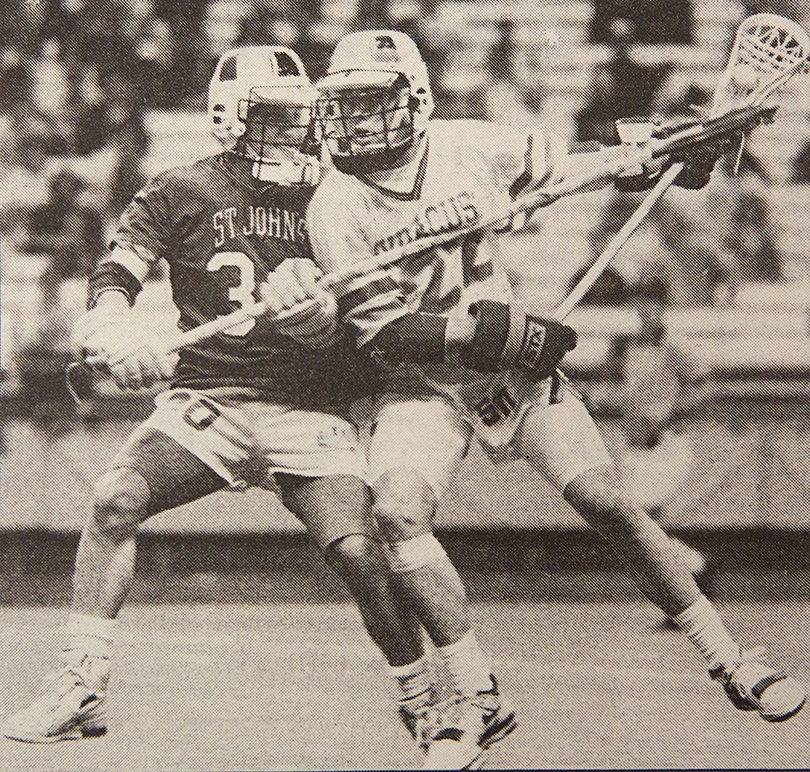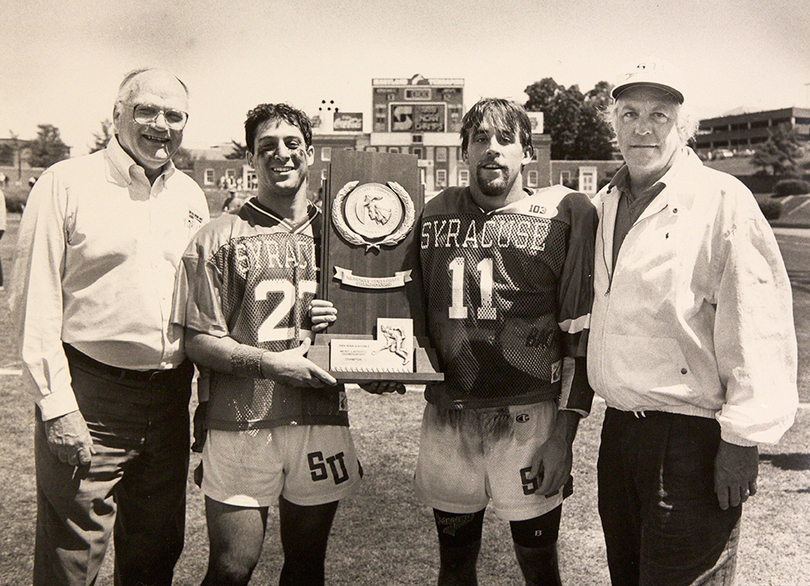Healing through sport: Former Syracuse University lacrosse coach reflects on giving back to Lockerbie
Devastation tore through Lockerbie, Scotland, blazing an irrevocable scar in the sleepy, unassuming Scottish town.
It was Dec. 21, 1988, when Libyan terrorists detonated a bomb on the New York-bound Pan Am Flight 103, killing all 259 on board, including 35 Syracuse University students returning from London, England, and Florence, Italy, after semesters abroad. Sections of the plane’s blasted wreckage sped toward Lockerbie, killing 11 more on the ground.
Tremendous grief would haunt both Lockerbie and the SU community for years to come. But for Lockerbie, that grief was accompanied by physical, vivid reminders of the carnage — townspeople hauled bodies from the field and rested them on the local ice rink’s floor, the town hall also doubled as a morgue and a massive crater was left behind after the plane’s fuselage bore into the ground.
During a Jan. 1989 Carrier Dome memorial service honoring those who perished, SU lacrosse coach Roy Simmons Jr. wondered how he could express his grief and sorrow to a community that both shared the university’s despair and had to literally “pick up our pieces” and sift through the debris left by the doomed flight.
“What could I do to say I was sorry?” Simmons Jr. said. “What could I do to have this village see intelligent, vibrant students alive? All they knew about Syracuse University students, they found them in the fields.”
For Simmons Jr., the answer came from what some would consider an unlikely source — lacrosse.
In 1989, one year after the bombing, Syracuse University was a tour de force in collegiate lacrosse — the men’s team notched two consecutive national titles in the preceding seasons and a third would follow. Simmons Jr. saw lacrosse as an opportunity to restore some joy in Lockerbie while showing the nation’s preeminent college lacrosse team a window into life beyond sport.
So the winningest coach in SU lacrosse history took one of his winningest squads to a town whose people lost so much. Simmons Jr. hatched the idea in January, 1989, raised $40,000 without assistance from the athletic department and set out on a two-week trip to Lockerbie, London and Manchester, England, with his 1988-89 team during winter break that year. There, they hosted clinics with donated lacrosse equipment and demonstrated the fundamentals of the “white collar” U.S. game to Scottish youth.
For the Scotts, the trip left an enduring mark on the sport’s history in the country. A national team was established, making an international appearance in the 1994 World Games, about four years after the SU team’s trip. Simmons Jr. returned three more times, witnessing lacrosse’s prominence in Scotland grow with the years.
While women’s lacrosse was still active at the time, the men’s game tapered off when many Scottish youth went into combat during World War I, Simmons Jr. said. The SU men’s lacrosse team revived and reintroduced the sport to Scottish boys, sowing the seeds and generating interest once more.
And the young Scottish boys kept with it. Now, the men’s Scottish national is classified as an “emerging nation” in the Federation of International Lacrosse and plays in the European Lacrosse Championships.
At the time, Simmons Jr. knew he wanted to bring joy and light to a village still scarred by the trauma of the disaster. He didn’t know SU’s presence would lay the groundwork for a re-emergence of lacrosse in Lockerbie.
“We had no idea,” Simmons said.
For SU men’s lacrosse players, like Brook Chase, visiting Lockerbie and Europe in general broadened their world and life views. Visiting the site where fellow students perished made Chase, an attackman at the time, contemplate life and death in ways he hadn’t.
“Mortality’s not in the forefront of your mind,” Chase said, recalling his mindset as a young college student before the trip. “I think this just made us realize how lucky we were.”
This was one of the trip’s fundamental underpinnings for Simmons Jr.
“I always talked about the big game. They asked, ‘Well what’s the big game? Tomorrow? The week after?’ Well no, the big game is after you graduate. It’s life,” Simmons Jr. said he told his players. “If you get a jumpstart on life and see what we saw that year, that’s better than reading it or seeing it on TV. You were literally there where the plane came down. You literally talked to people who picked up the carnage.”
As much as the trip was about giving and teaching, for the players, it was about learning, too.
“I think it just opened up a huge vision of the world in terms of what this crash actually meant. Having firsthand exposure to that, how gruesome a plane crash is,” said Dennis Simmons, an SU midfielder at the time. Turhan Ergin, a junior in the College of Visual Performing Arts who played lacrosse the season before, was aboard the ill-fated flight.
Memories of the team’s visit to Manchester and London are hazy for Dennis Simmons, who is not related to Roy Simmons Jr. But the time he spent in Lockerbie remains vivid, he said.
He remembers driving into Lockerbie and being struck by the landscape’s beauty, thinking to himself, “Wow, this is Lockerbie, the town I’ve heard so much about the last year. This is where it all went down.”
He remembers visiting the memorial site in Lockerbie as a team, each player laying a rose on the memorial and each pausing to pay tribute. And he recalls playing an inter-team lacrosse scrimmage as the community watched, clouds looming overhead as rain fell. He remembers the laughter and joy on faces of community members who were “in awe of all these American college students with lacrosse sticks playing this crazy game.”
The trip afforded the SU men’s lacrosse team an opportunity to heal and help heal, but Roy Simmons insisted it be an all-encompassing, cultural experience as well. Seeing the eager, excited faces of the people in Lockerbie greet his team, he considers it a mission accomplished.
“People ask me about my career here. They want to know highlights of my career. They want to know about championships and undefeated seasons and All-Americans and awards won,” Simmons said. “I’m not going to dwell on one game, one championship. If I have to single out what I thought I most achieved, it was showing the kids the reality of life and helping a little village in Scotland.”
Published on October 25, 2012 at 3:03 am
Contact Debbie: dbtruong@syr.edu | @debbietruong







